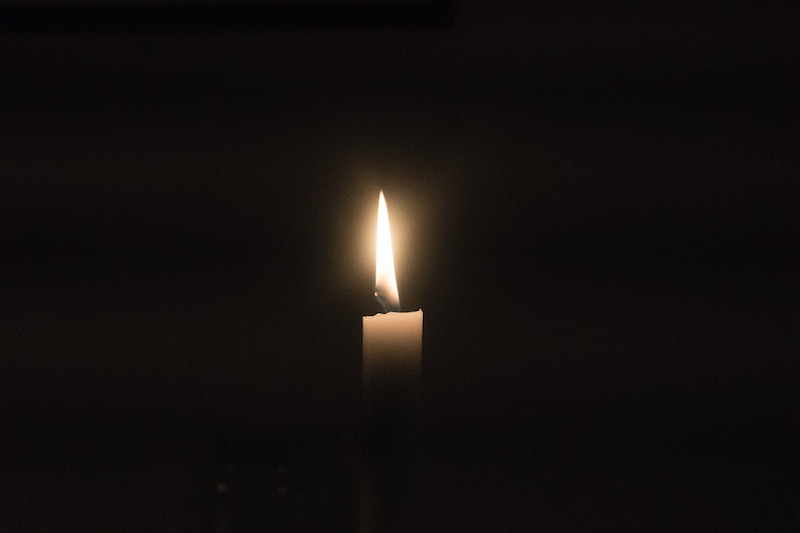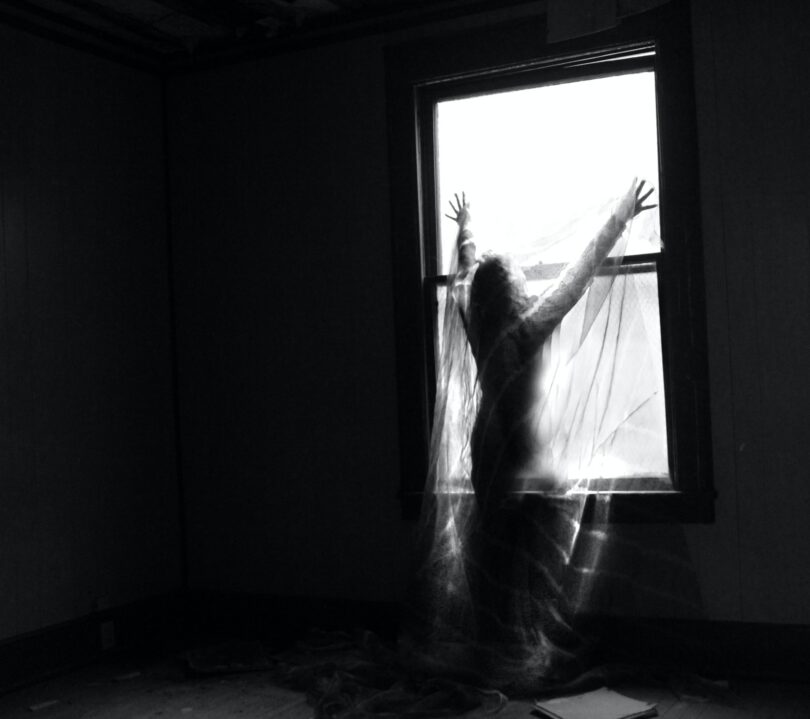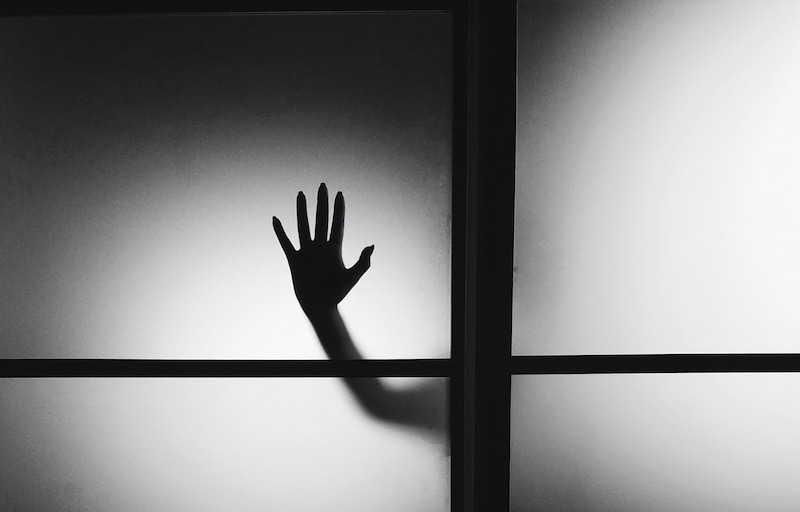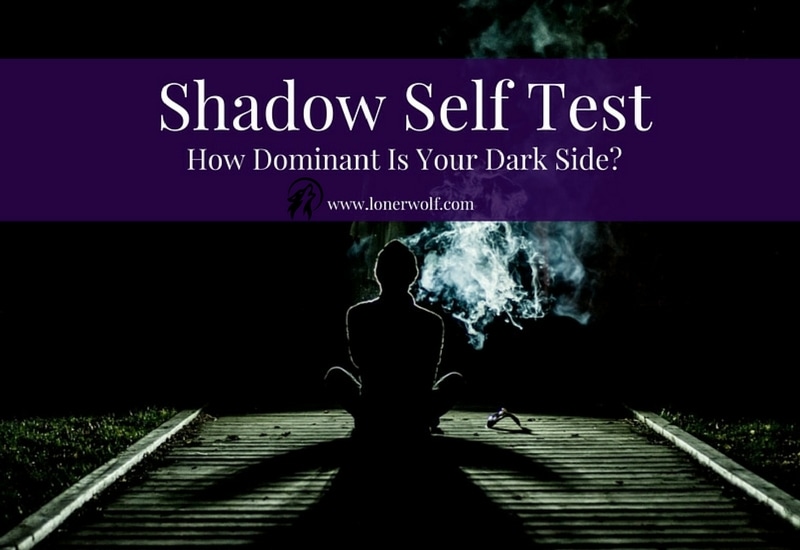Guest writer for Wake Up World
All of us carry demons inside.
Sometimes we catch fleeting glimpses of them, sometimes we witness them in full frontal chaos. But for the most part, we ignore and bury their existence either out of fear, guilt or pure shame.
However, as tempting as it is to suppress our demons, discovering and owning them is a vital part of our spiritual journey.
[pro_ad_display_adzone id=”110028″]
Beneath the social mask we wear every day, we have a hidden shadow side: an impulsive, wounded, sad, or isolated part that we generally try to ignore. The Shadow can be a source of emotional richness and vitality, and acknowledging it can be a pathway to healing and an authentic life.
In other words, the Shadow isn’t just the centrally wounded part of us, but it also provides a path towards a more authentic and fulfilling life. In order to heal and grow on a mental, emotional, and spiritual level, we need to practice Shadow Work.
Shadow Work is a practice that helps us to become whole again. It works on the premise that you must 100% OWN your Shadow, rather than avoiding or repressing it, to experience deep healing.
This daunting and often frightening task is a requirement of every person. But you don’t have to go at it alone.
In this long and detailed guide, I will offer you a helping hand. Having studied and worked with the Shadow for years, I’ll share with you some of the best tools, insights, and advice that I have gathered thus far.
Please note: Shadow Work exercises should not be undertaken if you struggle with low self-esteem. Exploring your demons will likely make you feel a million times worse about yourself and may spiral into self-hatred (especially if you’re going through the Dark Night of the Soul). Before doing Shadow Work, I strongly and emphatically encourage you to work on cultivating Self-Love. Shadow Work should only be undertaken by those who have healthy and stable self-worth and a friendly relationship with themselves. See this article on how to love yourself for more guidance.
Furthermore, if you need further in-depth support on your Shadow Work journey, see our highly rated Shadow Work Journal.
Why Focusing Only on the Light is a Form of Escapism

For most of my life, I’ve grown up firmly believing that the only thing worthy of guiding me was “light” and “love.”
Whether through the family environment I was raised in, or the cultural myths I was brought up clinging to, I once believed that all you really needed to do in life to be happy was to focus on everything beautiful, positive, and spiritually feel-good. I’m sure you were raised believing a similar story as well. It’s a sort of “Recipe for Well-Being” dictated by our culture.
I was wrong.
Not just wrong, but completely and utterly off the mark. Focusing only on “love and light” will not heal your wounds on a deep level.
In fact, I’ve learned through a lot of deep inner work, that not only is focusing solely on the “light side of life” one side of the equation, but it is actually a form of spiritually bypassing your deeper, darker problems that, let me assure you, are basically guaranteed to exist.
It’s very easy and comfortable to focus only on the light side of life. So many people in today’s world follow this path. And while it might provide some temporary emotional support, it doesn’t reach to the depths of your being: it doesn’t transform you at a core level. Instead, it leaves you superficially hanging onto warm and fuzzy platitudes which sound nice, but don’t enact any real change.
What DOES touch the very depths of your being, however, is exploring your Shadow.
What is the Human Shadow?

What is the human Shadow? In short, the Shadow is our dark side; our lost and forgotten disowned self. Your Shadow is the place within you that contains all of your secrets, repressed feelings, primitive impulses, and parts deemed “unacceptable,” shameful, “sinful” or even “evil.”
This hidden place lurking within your unconscious mind also contains suppressed and rejected emotions such as rage, jealousy, hatred, greed, deceitfulness, and selfishness.
So where did the Shadow Self idea originate? The concept was originally coined and explored by Swiss psychiatrist and psychoanalyst, Carl Jung. In Jung’s own words:
Everyone carries a shadow, and the less it is embodied in the individual’s conscious life, the blacker and denser it is.
When the human Shadow is shunned, it tends to undermine and sabotage our lives. Addictions, low self-esteem, mental illness, chronic illnesses, and various neuroses are all attributed to the Shadow Self.
When our Shadows are suppressed or repressed in the unconscious long enough, they can even overtake our entire lives and cause psychosis or extreme forms of behavior like cheating on one’s partner or physically harming others. Intoxicants such as alcohol and drugs also have a tendency to unleash the Shadow.
Thankfully, there is a way to explore the Shadow and prevent it from devouring our existence, and that is called Shadow Work.
What is Shadow Work?

Shadow Work is the process of exploring your inner darkness or “Shadow Self.” As mentioned previously, your Shadow Self is part of your unconscious mind and contains everything you feel ashamed of thinking and feeling, as well as every impulse, repressed idea, desire, fear and perversion that for one reason or another, you have “locked away” consciously or unconsciously. Often this is done as a way of keeping yourself tame, likable, and “civilized” in the eyes of others.
Shadow Work is the attempt to uncover everything that we have hidden and every part of us that has been disowned and rejected within our Shadow Selves. Why? Because without exploring what is hidden within, we remain burdened with problems such as anger, guilt, shame, disgust, and grief.
All throughout the history of humanity, Shadow Work has played a powerful yet mysterious role in helping us discover what is at the root of our individual and collective mental illness, physical dis-ease, and even insanity resulting in crimes of all kinds.
Traditionally, Shadow Work fell in the realm of the Shamans, or medicine people, as well as the priests and priestesses of the archaic periods of history. These days, Shadow Work falls more commonly in the realms of psychotherapy, with psychologists, psychiatrists, spiritual guides, and therapists showing the way.
Do We All Have a Shadow Self?

Yes, we ALL have a Shadow Self (see our Collective Shadow article for a deeper explanation).
As uncomfortable as it may sound, there is a dark side within every human being. Why is this the case? The reason why all human beings have a shadow is due to the way we were raised as human beings, often referred to as our ‘conditioning.’ (We’ll explore how the Shadow is formed in the next section of this article.)
“But I’m a good person! I don’t have a ‘shadow’ side,” you might be thinking. Well, the reality is that yes, you might be a good person. In fact, you might be the most generous, loving, and selfless person in the entire world. You might feed the hungry, save puppies, and donate half of your salary to the poor. But that doesn’t exclude you from having a Shadow. There are no exceptions here. The nature of being human is to possess both a light and a dark side, and we need to embrace that.
Sometimes, when people hear that they have a Shadow side (or when it is pointed out), there is a lot of denial. We have been taught to perceive ourselves in a very two-dimensional and limited way. We have been taught that only criminals, murderers, and thieves have a Shadow side. This black and white thinking is one of the major causes of our suffering.
If the thought of having a Shadow side disturbs you, take a moment to consider whether you have developed an idealized and unrealistic sense of self. Signs of an idealized or unrealistic sense of self include attitudes such as:
- “I’m not like those people, I’m better.”
- “I have never strayed.”
- “God is proud of me.”
- “Criminals and wrongdoers aren’t human.”
- “Everyone sees how good I am (even so, I have to remind them).”
- “I’m a role model.”
- “I should be validated and applauded for my good deeds.”
- “I don’t have bad thoughts, so why do others?”
Such perceptions about ourselves are unrealistic, unhealthy, and basically delusional. The only way to find inner peace, happiness, authentic love, self-fulfillment, and Illumination is to explore our Shadows.
How is Our Shadow Side Formed?

Your Shadow side was formed in childhood and is both (a) a product of natural ego development, and (b) a product of conditioning or socialization. Socialization is the process of learning to behave in a way that is acceptable to society.
When we are born, we’re full of vast, innocent, wide-eyed potential. As time goes on, we learn more and more to become a certain type of person. Slowly, due to our circumstances and preferences, we begin to adopt certain character traits and reject others.
For example, if we’re born into a family that shows little interpersonal warmth, we will develop personality traits that make us self-sufficient and perhaps standoffish or mind-oriented. If we’re born into a family that rewards compliance and shuns rebellion, we will learn that being submissive works, and thus adopt that as part of our ego structure.
As authors and Jungian therapists Steve Price and David Haynes write:
But, as we develop our ego personality, we also do something else at the same time. What has happened to all those parts of our original potential that we didn’t develop? They won’t just cease to exist: they will still be there, as potential or as partly developed, then rejected, personality attributes, and they will live on in the unconscious as an alternative to the waking ego. So, by the very act of creating a specifically delineated ego personality, we have also created its opposite in the unconscious. This is the shadow. Everyone has one.
As we can see, developing the Shadow Self is a natural part of development.
But you also formed a Shadow due to social conditioning, i.e., your parents, family members, teachers, friends, religion, and society at large all contributed to the repression of some parts of you.
How?
Well here’s the thing: polite society operates under certain rules. In other words, certain behaviors and characteristics are approved of, while others are shunned.
Take anger for example. Anger is an emotion that is commonly punished while growing up. Throwing tantrums, swearing, and destroying things was frowned upon by our parents and teachers. Therefore, many of us learned that expressing anger was not “OK.” Instead of being taught healthy ways to express our anger, we were punished sometimes physically (with smacks or being grounded), and often emotionally (withdrawal of love and affection).
There are countless behaviors, emotions, and beliefs that are rejected in society, and thus, are rejected by ourselves. In order to fit in, be accepted, approved, and loved, we learned to act a certain way. We adopted a role that would ensure our mental, emotional, and physical survival.
But at the same time, wearing a mask has consequences. What happened to all the authentic, wild, socially taboo or challenging parts of ourselves? They were locked in the Shadow.
What happens as we grow up?
Through time, we learn to both enjoy, and despise, our socially-approved egos because, on the one hand, they make us feel good and “lovable,” but on the other hand, they feel phony and inhibited.
Therapist Steve Wolf has a perfect analogy that describes this process:
Each of us is like Dorian Grey. We seek to present a beautiful, innocent face to the world; a kind, courteous demeanour; a youthful, intelligent image. And so, unknowingly but inevitably, we push away those qualities that do not fit the image, that do not enhance our self-esteem and make us stand proud but, instead, bring us shame and make us feel small. We shove into the dark cavern of the unconscious those feelings that make us uneasy — hatred, rage, jealousy, greed, competition, lust, shame — and those behaviours that are deemed wrong by the culture — addiction, laziness, aggression, dependency — thereby creating what could be called shadow content. Like Dorian’s painting, these qualities ultimately take on a life of their own, forming and invisible twin that lives just behind our life, or just beside it …
But while the Shadow Self may be portrayed as our “evil twin,” it is not entirely full of “bad” stuff. There is actually gold or goodness to be found within the Shadow.
What is the Golden Shadow?

Jung once stated that “the shadow is ninety percent pure gold.” What this means is that there are many beautiful gifts offered to us by our Shadow side if we take the time to look. For example, so much of our creative potential is submerged within our darkness because we were taught when little to reject it.
Not everything within our Shadow is doom and gloom. In fact, the Shadow contains some of our most powerful gifts and talents, such as our artistic, sexual, competitive, innovative, and even intuitive aptitudes.
The ‘Golden Shadow’ also presents us with the opportunity for tremendous psychological and spiritual growth. By doing Shadow Work, we learn that every single emotion and wound that we possess has a gift to share with us. Even the most obnoxious, “ugly,” or shameful parts of ourselves provide a path back to Oneness.
Such is the power of the Shadow – it is both a terrifying journey, but it is ultimately a path to Spiritual Enlightenment or Illumination. Every spiritual path needs Shadow Work in order to prevent the issues from happening that we’ll explore next.
What Happens When You Reject Your Shadow?

When shadow-work is neglected, the soul feels dry, brittle, like an empty vessel.
— S. Wolf
Rejecting, suppressing, denying, or disowning your Shadow, whether consciously or unconsciously, is harmful and dangerous.
The thing about the Shadow Self is that it seeks to be known. It yearns to be understood, explored, and integrated. It craves to be held in awareness. The longer the Shadow stays buried and locked in its jail cell deep within the unconscious, the more it will find opportunities to make you aware of its existence.
Both religion and modern spirituality have a tendency to focus on the “love and light” aspects of spiritual growth to their own doom. This over-emphasis on the fluffy, transcendental, and feel-good elements of a spiritual awakening results in shallowness and phobia of whatever is too real, earthy, or dark.
Spiritually bypassing one’s inner darkness results in a whole range of serious issues. Some of the most common and reoccurring Shadow issues that appear in the spiritual/religious community include pedophilia among priests, financial manipulation of followers among gurus, and of course, megalomania, narcissism, and God complexes among spiritual teachers.
Other issues that arise when we reject our Shadow side can include:
- Hypocrisy (believing and supporting one thing, but doing the other)
- Lies and self-deceit (both towards oneself and others)
- Uncontrollable bursts of rage/anger
- Emotional and mental manipulation of others
- Greed and addictions
- Phobias and obsessive compulsions
- Racist, sexist, homophobic, and other offensive behavior
- Intense anxiety
- Chronic psychosomatic illness
- Depression (which can turn into suicidal tendencies)
- Sexual perversion
- Narcissistically inflated ego
- Chaotic relationships with others
- Self-loathing
- Self-absorption
- Self-sabotage
… and many others. This is by no means a comprehensive list (and there are likely many other issues out there). As we’ll learn next, one of the greatest ways we reject our Shadows is through psychological projection.
The Shadow and Projection (a Dangerous Mix)

One of the biggest forms of Shadow rejection is something called projection. Projection is a term that refers to seeing things in others that are actually within ourselves.
When we pair projection and the Shadow Self together, we have a dangerous mix.
Why?
Because as psychotherapist Robert A. Johnson writes:
We generally seek to punish that which reminds us most uncomfortable about the part of ourselves that we have not come to terms with, and we often ‘see’ these disowned qualities in the world around us.
There are many different ways we ‘punish’ those who are mirrors of our Shadow qualities.
We may criticize, reject, hate, dehumanize, or even in extreme cases, physically or psychologically seek to destroy those on whom we project our Shadows (e.g., think of countries who go at war with the “enemies”).
None of us are innocent in this area. We have ALL projected parts of our rejected Shadow Selves onto others. In fact, Shadow projection is a major cause of relationship dysfunction and break down.
If we are seeking to bring peace, love, and meaning to our lives, we absolutely MUST reclaim these projections. Through Shadow Work, we can explore exactly what we have disowned.
12 Benefits of Shadow Work

Firstly, I want to say that I have the highest respect for Shadow Work. It is the single most important path I’ve taken to uncover my core wounds, core beliefs, traumas, and projections.
I have also observed how Shadow Work has helped to create profound clarity, understanding, harmony, acceptance, release, and inner peace in the lives of others. It is truly deep work that makes changes on the Soul level, targeting the very roots of our issues, not just the superficial symptoms.
There is SO much to be gained from making Shadow Work a part of your life and daily routine. Here are some of the most commonly experienced benefits:
- Deeper love and acceptance of yourself
- Better relationships with others, including your partner and children
- More confidence to be your authentic self
- More mental, emotional, and spiritual clarity
- Increased compassion and understanding for others, particularly those you dislike
- Enhanced creativity
- Discovery of hidden gifts and talents
- Deepened understanding of your passions and ultimate life purpose
- Improved physical and mental health
- More courage to face the unknown and truly live life
- Access to your Soul or Higher Self
- A feeling of Wholeness
It’s important to remember that there are no quick fixes in Shadow Work, so these life-changing benefits don’t just happen overnight. But with persistence, they will eventually emerge and bless your life.
7 Tips For Approaching Shadow Work

Before you begin Shadow Work, it’s important for you to assess whether you’re ready to embark on this journey. Not everyone is prepared for this deep work, and that’s fine. We’re all at different stages. So pay attention to the following questions and try to answer them honestly:
- **Have you practiced self-love yet?** If not, Shadow Work will be too overwhelming for you. I have starred this bullet point because it is essential for you to consider. Shadow Work should not be attempted by those who have poor self-worth or struggle with self-loathing. In other words: if you struggle with severely low self-esteem, please do not attempt Shadow Work. I emphatically warn you against doing this. Why? If you struggle with extremely poor self-worth, exploring your Shadows will likely make you feel ten times worse about yourself. Before you walk this path, you absolutely must establish a strong and healthy self-image. No, you don’t have to think that you’re God’s gift to the world, but having generally “good” self-worth is important. Try taking this self-esteem test to explore whether you’re ready (but first, don’t forget to finish this article!).
- Are you prepared to make time? Shadow Work is not a lukewarm practice. You’re either all in or all out. Yes, it’s crucial to take a break from this work from time to time. But Shadow Work requires dedication, self-discipline, and persistence. Are you willing to intentionally carve out time each day to dedicate to it? Even just ten minutes a day is a good start.
- Are you looking to be validated or to find the truth? As you probably know by now, Shadow Work isn’t about making you feel special. It isn’t like typical spiritual paths which are focused on the feel-good. No, Shadow Work can be brutal and extremely confronting. This is a path for truth seekers, not those who are seeking to be validated.
- Seek to enter a calm and neutral space. It’s important to try and relax when doing Shadow Work. Stress and judgmental or critical attitudes will inhibit the process. So please try to incorporate a calming meditation or mindfulness technique into whatever you do.
- Understand that you are not your thoughts. It’s essential for you to realize that you are not your thoughts for Shadow Work to be healing and liberating. Only from your calm and quiet inner Center (also known as your Soul) can you truly be aware of your Shadow aspects. By holding them in awareness, you will see them clearly for what they are, and realize that they ultimately don’t define you; they are simply rising and falling mental phenomena.
- Practice self-compassion. It is of paramount importance to incorporate compassion and self-acceptance into your Shadow Work practice. Without showing love and understanding to yourself, it’s almost guaranteed that your Shadow Work will backfire and make you feel terrible. So focus on generating self-love and compassion, and you will be able to release any shame and embrace your humanity.
- Record everything you find. Keep a written journal or personal diary in which you write down (or even draw) your discoveries. Recording your dreams, observations, and self-analysis will help you to learn and grow more effectively. You’ll also be able to keep track of your process and make important connections. Learn more about how to journal.
How to Practice Shadow Work

There are many Shadow Work techniques and exercises out there.
In the guide below, I will provide a few to help you start off. I’ll also share a few examples from my own life:
1. Pay attention to your emotional reactions

In this practice, you’ll learn that what you give power to has power over you. Let me explain:
One Shadow Work practice I enjoy a great deal is paying attention to everything that shocks, disturbs, and secretly thrills me. Essentially, this practice is about finding out what I’ve given power to in my life unconsciously, because:
what we place importance in – whether good or bad – says a lot about us.
The reality is that what we react to or what makes us angry and distressed, reveals extremely important information about ourselves.
For example, by following where my “demons” have taken me – whether in social media, family circles, workspaces, and public places – I have discovered two important things about myself. The first one is that I have an issue with control; I hate feeling vulnerable, powerless, and weak . . . it quite simply scares the living hell out of me.
How did I discover this? Through my intense dislike of watching the thriller and horror genre, my negative reaction to novel experiences (e.g., roller coaster rides, public speaking, etc.), as well as my discomfort surrounding sharing information about my life with others in conversations.
Also, by following where my “demons” have guided me I’ve discovered that I carry, on some level, a profound guilt complex that I developed through my religious upbringing.
A part of me wants to feel unworthy because that is what I’ve developed a habit of feeling since childhood (e.g., “You’re a sinner,” “It’s your fault Jesus was crucified,” etc.) and therefore, that is what I secretly feel comfortable with feeling: unworthy. So my mind nit-picks anything I might have done “wrong,” and I’m left with the feeling of being “bad.”
Thanks to this practice of paying attention to my emotional reactions, I’ve welcomed more compassion, mindfulness, and forgiveness into my life.
Paying attention to your emotional reactions can help you to discover exactly how your core wounds are affecting you on a daily basis.
How to Pay Attention to Your Emotional Reactions
To effectively pay attention to your emotional reactions (I call it “following the trail of your inner demons”), you first need to cultivate:
Without being conscious of what you’re doing, thinking, feeling and saying, you won’t progress very far. Journaling is a wonderful way to cultivate more self-awareness.
If, however, you’re fairly certain that you’re self-aware (or enough to start the process), you will then need to:
2. Adopt an open mindset
Have the courage and willingness to observe everything that makes you feel uncomfortable, and ask “why?” What do I mean by everything that makes you feel “uncomfortable”? By this, I mean that, whatever riles, shocks, infuriates, disturbs, grosses out, or terrifies you, you must pay attention to. Closely.
Likely, you’ll discover surprising patterns emerging in your life. For example, you might be outraged or embarrassed every time sex appears in a TV show or movie you like (possibly revealing sexual repression or mistaken beliefs about sex that you’ve adopted throughout life).
Or you might be terrified of seeing death or dead people (possibly revealing your resistance to the nature of life or a childhood trauma). Or you might be disgusted by alternative political, sexual, and spiritual lifestyles (possibly revealing your hidden desire to do the same or even an inner bigoted side).
There are so many possibilities out there, and I encourage you to go slowly, take your time, and one by one pick through what you place importance in.
The moment you emotionally react to something is the moment you have given that thing power over you. This practice of open awareness helps you to regain perspective, understanding, and access to your Shadow.
2. Artistically Express Your Shadow Self

Art is the highest form of self-expression and it’s also a great way to allow your Shadow to manifest itself. Psychologists often use art therapy as a way to help patients explore their inner selves.
Start by allowing yourself to feel (or draw on any existing) “dark” emotions. Choose an art medium that calls to you such as pen and pencil, watercolor, crayon, acrylic paint, scrapbooking, sculpting, etc. and draw what you feel.
You don’t need to consider yourself an “artist” to benefit from this activity. You don’t even need to plan what you’ll create. Just let your hands, pen, pencil, or paintbrush do the talking. The more spontaneous, the better.
Artistic expression can reveal a lot about your obscure darker half. Psychologist Carl Jung (who conceptualized the Shadow Self idea) was famous for using mandalas in his therapy sessions.
3. Start a Project

The act of creation can be intensely frustrating and can give birth to some of your darker elements such as impatience, anger, blood-thirsty competitiveness, and self-doubt. At the same time, starting a project also allows you to experience feelings of fulfillment and joy.
If you don’t already have a personal project that you’re undertaking (such as building something, writing a book, composing music, mastering a new skill), find something you would love to start doing.
Using self-awareness and self-exploration during the process of creation, you will be able to reap deeper insights into your darkness. Ask yourself questions like, “What am I feeling and why?” Notice the strong emotions that arise during the act of creation, both good and bad. You’ll likely be surprised by what you find!
For example, as a person who considers myself non-competitive, that assumption has been challenged by the act of writing for and maintaining this website. Thanks to this Soul project, the Shadow within me of ruthless competitiveness has shown its face, allowing me to understand myself more deeply.
4. Write a Story or Keep a Shadow Journal

Goethe’s story Faust is, in my opinion, one of the best works featuring the meeting of an ego and his Shadow Self. His story details the life of a Professor who becomes so separated and overwhelmed by his Shadow that he comes to the verge of suicide, only to realize that the redemption of the ego is solely possible if the Shadow is redeemed at the same time.
Write a story where you project your Shadow elements onto the characters – this is a wonderful way to learn more about your inner darkness!
If stories aren’t your thing, keeping a journal or diary every day can shine a light on the darker elements of your nature. Reading through your dark thoughts and emotions can help you to recover the balance you need in life by accepting both light and dark emotions within you.
If you’d like to use some questions to explore your Shadow, you can go through our 30+ Shadow Work Prompts article.
5. Explore Your Shadow Archetypes

We all have different varieties of Shadows within us, also called Shadow Archetypes. These archetypes are sometimes defined as:
- The Sorcerer
- The Dictator
- The Victim
- The Shadow Witch
- The Addict
- The Idiot
- The Trickster
- The Destroyer
- The Slave
- The Shadow Mother
- The Hag
- The Hermit
I have my own Shadow Archetype classification, which I will include below.
13 Shadow Archetypes
Here are my thirteen classifications which are based on my own self-observations and analysis of others:
1. The Egotistical Shadow
Defined by the following qualities: arrogance, egocentricity, pompousness, inconsiderateness, self-indulgence, narcissism, excessive pride.
2. The Neurotic Shadow
Defined by the following qualities: paranoia, obsessiveness, suspiciousness, finicky/demanding/compulsive behavior.
3. The Untrustworthy Shadow
Defined by the following qualities: secretive, impulsive, frivolous, irresponsible, deceitful, unreliable.
4. The Emotionally Unstable Shadow
Defined by the following qualities: moody, melodramatic, weepy, overemotional, impulsive, changeable.
5. The Controlling Shadow
Defined by the following qualities: suspicious, jealous, possessive, bossy, obsessive.
6. The Cynical Shadow
Defined by the following qualities: negative, overcritical, patronizing, resentful, cantankerous.
7. The Wrathful Shadow
Defined by the following qualities: ruthless, vengeful, bitchy, quick-tempered, quarrelsome.
8. The Intolerant Shadow
Defined by the following qualities: uptight, rigid, racist, sexist, ableist, homophobic, transphobic, obstinate, uncompromising, inflexible, narrow-minded.
9. The Glib Shadow
Defined by the following qualities: superficial, cunning, inconsistent, sly, crafty.
10. The Cold Shadow
Defined by the following qualities: emotionally detached, distant, indifferent, uncaring, unexcited.
11. The Perverted Shadow
Defined by the following qualities: masochistic, depraved, sadistic, vulgar, libidinous.
12. The Cowardly Shadow
Defined by the following qualities: weak-willed, passive, timid, fearful, untrustworthy.
13. The Immature Shadow
Defined by the following qualities: puerile, childish, illogical, superficial, vacuous.
Keep in mind that the above Shadow Archetypes are by no means exhaustive. I’m sure that there are many others out there which I have missed. But you are free to use this breakdown to help you explore your own Shadows.
You’re also welcome to add to this list or create your own Shadow Archetypes, which I highly encourage. For example, you might possess a judgmental and dogmatic Shadow who you call “The Nun,” or a sexually deviant Shadow who you call “The Deviant.” Play around with some words and labels, and see what suits your Shadows the best.
6. Have an Inner Conversation

Also known as “Inner Dialogue,” or as Carl Jung phrased it, “Active Imagination,” having a conversation with your Shadow is an easy way to learn from it.
I understand if you might feel a twinge of skepticism towards this practice right now. After all, we’re taught that “only crazy people talk to themselves.” But inner dialogue is regularly used in psychotherapy as a way to help people communicate with the various subpersonalities that they have – and we all possess various faces and sides of our egos.
One easy way to practice inner dialogue is to sit in a quiet place, close your eyes, and tune into the present moment. Then, think of a question you would like to ask your Shadow, and silently speak it within your mind. Wait a few moments and see if you ‘hear’ or ‘see’ an answer. Record anything that arises and reflect on it.
It’s also possible to carry on a conversation with your Shadow using this method. Just ensure that you have an open mindset. In other words, don’t try to control what is being said, just let it flow naturally. You’ll likely be in awe of the answers you receive!
Visualization is another helpful way of engaging in inner dialogue. I recommend bringing to mind images of dark forests, caves, holes in the ground, or the ocean as these all represent the unconscious mind. Always ensure that you enter and exit your visualization in the same manner, e.g., if you’re walking down a path, make sure you walk back up the path. Or if you open a particular door, make sure you close the same door when returning back to normal consciousness. This practice will help to draw you effortlessly in and out of visualizations.
7. Use the Mirror Technique

As we’ve learned, projection is a technique used by the ego to help us avoid the Shadow parts within that we’ve disowned (knowingly or unknowingly). However, we don’t only project the deeper and darker aspects of ourselves onto others, we also project our light and positive attributes as well.
For example, you may be attracted to another person who displays fierce self-assertiveness, not realizing that this is a quality that you secretly long to reunite with inside yourself.
Another common example (this time negative) is judgmentalism. How many times have you heard someone say “he/she is so judgmental!” Ironically, the very person saying this doesn’t realize that calling another person ‘judgmental’ is actually pronouncing a judgment against them and revealing their own judgmental nature!
The Mirror Technique is the process of uncovering our projections. To practice this technique, we must adopt a mindful and honest approach toward the world. We need to be prepared to “look in the mirror” and own that which we have disowned!
Another helpful mindset that we can adopt is that other people are our mirrors. In other words, we can understand that those around us serve as the perfect canvas onto which we project all of our unconscious desires and fears.
To start this practice, examine your thoughts and feelings about those you come in contact with. Pay attention to moments when you’re emotionally triggered and ask yourself, “What might I be projecting?”
Remember that it’s also possible to project our qualities onto another person who really does possess those same qualities. Psychologists sometimes refer to this as “projecting onto reality.” For example, we might project our rage onto another person who is, in fact, a rage-filled person. Or we might project our jealousy onto another who genuinely is jealous.
Ask yourself, “What is mine, what is theirs, and what is both of ours?” Not every triggering situation reveals a projection, but more often than not, they do. Also look for things you love and adore about others, and uncover the hidden projections there.
The Mirror Technique will help you to shed a lot of light onto Shadow qualities that you have rejected, suppressed, repressed, or disowned.
For further guidance on this specific technique, see our article on mirror work.
Shadow Work Q&A

Here are some commonly asked questions about Shadow Work:
What is shadow work?
Shadow Work is the psychological and spiritual practice of exploring our dark side or the ‘shadowy’ part of our nature. We all possess a place within us that contains our secrets, repressed feelings, shameful memories, impulses, and parts that are deemed “unacceptable” and “ugly.” This is our dark side or shadow self – and it is often symbolized as a monster, devil, or ferocious wild animal.
How to do shadow work?
There are many ways to practice shadow work. Some of the most powerful and effective techniques include journaling, artistically expressing your dark side (also known as art therapy), using a mirror to connect with this part of you (mirror work), guided meditations, exploring your projections, and examining your shadow archetypes.
What is the spiritual shadow?
There is light and darkness within all areas of life, and spirituality is not exempt. The spiritual shadow is what occurs when we fall into the traps of spiritual materialism – a phenomenon where we use spirituality to boost our egos and become arrogant, self-absorbed, and even narcissistic. The spiritual narcissism arises out of spiritual materialism.
Shadow Self Test

As passionate proponents of Shadow Work, we have created a free Shadow Self test on this website for you to take. Like any test, take it with a grain of salt and use your own analysis to ultimately determine how ‘dominant’ your Shadow is in your life.
Please remember that tests online cannot be 100% accurate, so see this test as a fun self-discovery tool. And note: those who receive a “small Shadow Self” answer still need to do Shadow Work. No person is exempt. 😉
Here’s our free Shadow Self test.
Own Your Shadow and You Will Own Your Life

If you’re looking for serious, deep, authentic, and long-lived healing in your life, Shadow Work is the perfect pathway to experiencing profound inner transformation.
Remember that what you internalize is almost always externalized in one form or another.
Own your shadow and you will own your life.
Here are some final inspiring words on the Shadow:
The secret is out: all of us, no exceptions, have qualities we won’t let anyone see, including ourselves – our Shadow. If we face up to our dark side, our life can be energized. If not, there is the devil to pay. This is one of life’s most urgent projects.
— Larry Dossey (Healing Words)
If we don’t change, we don’t grow. If we don’t grow, we are not really living. Growth demands a temporary surrender of security.
— Gail Sheehy
Who has not at one time or another felt a sourness, wrath, selfishness, envy and pride, which he could not tell what to do with, or how to bear, rising up in him without his consent, casting a blackness over all his thoughts … It is exceeding good and beneficial to us to discover this dark, disordered fire of our soul; because when rightly known and rightly dealt with, it can as well be made the foundation of heaven as it is of hell.
— William Law
To confront a person with his own shadow is to show him his own light.
— Carl Jung
Tell me, have you met your shadow? If so, what was it like? Please share below! I’d love to read your story.
About the author:
Aletheia Luna is a prolific psychospiritual writer, author, and spiritual mentor whose work has touched the lives of millions worldwide. As a survivor of fundamentalist religious abuse, her mission is to help others find love, strength, and inner light in even the darkest places. She is the author of hundreds of popular articles, as well as numerous books and journals on the topics of Self-Love, Spiritual Awakening, and more. See more of her work at lonerwolf.com.
This article, Shadow Work: 13 Dark Archetypes and Free Test, was originally published on lonerwolf.com, reproduced with permission.
[pro_ad_display_adzone id=”110027″]








